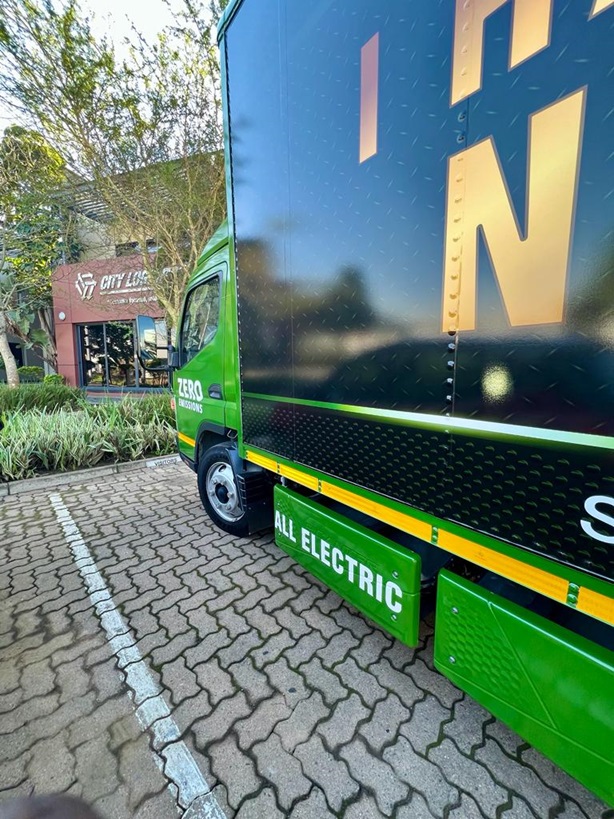The last century saw few changes to trucks; their appearances were unchanged, and they were all powered by internal combustion engines fuelled by diesel. However, this century has witnessed impressive change! The transport industry is enjoying one innovation following the next; anything and everything from electric trucks to those with fuel cells and even those without drivers. But which of these innovations can you expect to see on South African roads in 2024?
Electric trucks
While South Africa is trailing some other markets when it comes to the rollout of electric commercial vehicles – China, for instance, saw an impressive 36,000 electric trucks being sold in 20221 – the country is certainly not stuck in the last century. On the contrary, some electric trucks are already being sold locally.
Volvo, for instance, is selling its FH Electric, which has just been named the 2024 International Truck of the Year. Volvo launched its complete electric range to the South African market in June this year – and South Africans will certainly see more of these trucks on their roads.
“Due to their generally limited range of approximately 200km, electric trucks will primarily be utilised for urban routes, in-city deliveries, and local to regional deliveries. Long-distance deliveries using electric trucks are not expected in South Africa next year,” says Ryan Gaines, CEO of City Logistics, a leading privately-owned logistics company in South Africa. However, this is a future possibility; Mercedes-Benz Trucks recently launched the new eActros 600 overseas, and it’s capable of an impressive 500km without recharging.
Alternative energy sources
The electric trucks on South Africa’s roads will be joined by vehicles powered by gas – specifically compressed natural gas (CNG) or liquified natural gas (LNG) – and fuel cell trucks. A fuel cell truck is an electric truck that generates electricity from fuel cells that are powered by hydrogen stored in tanks in the truck. In a fuel cell, hydrogen and oxygen are combined through an electrochemical reaction to generate electricity, heat and water.
More and more of these models are being brought to South Africa for testing – and South Africans will see medium, heavy and extra-heavy trucks like this on the country’s roads (anything from 14-ton rigids to 4×2, 6×2 and 6×4 truck tractors).
South Africa is however still a Euro 2 market (Euro 2 is an emission standard with petrol CO2 limits of 2.2g/km and diesel .0 g/km respectively²; Europe is on Euro 6).“But some local companies don’t want to simply meet the bare minimum when it comes to emissions. The alternative fuel vehicles will appeal to companies that are aligned to a long-term sustainability journey until regulations are implemented to create a minimum standard for the logistics industry,” believes Gaines.
With the introduction of eco-operations such as rechargeable electric forklifts, City Logistics has introduced energy-saving systems, using power-efficient units, reducing fuel consumption in its warehousing operations. The use of reverse logistics and inter-branch transfers also means that its fleet is used even on return trips, thus saving fuel. In the interim whilst new energy vehicles are established in South Africa, City Logistics will continue to use the most efficient models to minimise its carbon emissions.
Autonomous vehicles
While there will be increased volumes of Euro 4, 5 and 6 vehicles on South African roads, the good news – for truck drivers – is that South Africa is not going to see autonomous trucks any time soon. This is because the road infrastructure is not set up to accommodate these vehicles, nor has legislation been promulgated to allow for this.
Safety innovation comes standard
Finally, more good news is that there will be safer trucks on South African roads in 2024 – and into the future too. Global truck manufacturers are constantly striving to introduce innovative safety features and – whereas, in the past, many were optional extras – features such as lane guidance and collision avoidance are fast becoming standard features in the newer models released.
References:
1.https://theicct.org/china-is-propelling-its-electric-truck-market-aug23/#:~:text=Indeed%2C%20based%20on%20data,trucks%20in%20a%20single%20year
2. https://www.theaa.com/driving-advice/fuels-environment/euro-emissions-standards
Article Provided




























